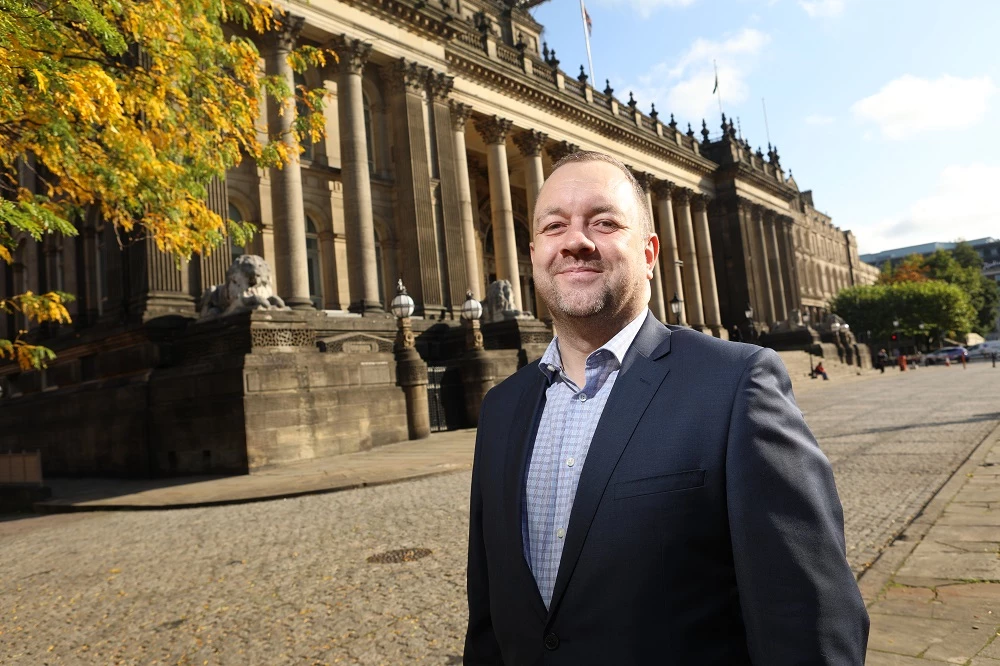
Partner Article
Engineering a sustainable future
Sustainable engineering offers opportunity and those who drive the agenda in this area will reap the rewards, says Ross Oakley, managing director of civil and structural engineers RWO.
We are seeing increasingly high standards of efficiency and sustainable methods of construction specified - something that will increase as innovative building engineering solutions continue to come on stream. It’s certainly a bold agenda but sitting alongside a more forward-looking vision from all involved in the construction supply chain - from planners and local authorities through architects to developers - it’s certainly one that can only deliver meaningful and effective change.
However, engineering sustainability can be hard to define but for those working at the forefront of the sector it’s about the environment, corporate responsibility, oversight, and of course, health and safety. UNESCO defines sustainable engineering as the process of using resources in a way that does not compromise the environment or deplete what is available for future generations. It requires an interdisciplinary approach with close cooperation across the engineering spectrum and is not the sole responsibility of any one individual.
It’s also much more than simply cutting waste in the supply chain and using environmentally friendly products; although this continues to remain paramount. It’s about thinking differently, adopting smarter ways to operate and do business, and should include how to add value throughout the supply chain, overcome tough environmental challenges and provide innovative solutions that those at the sharp end of turning visions into construction reality can implement. Innovation is the watchword.
Considering a sustainable approach to engineering from the very start of a project will invariably save time, resources, deliver greater flexibility in an evolving construction landscape, and minimise the inevitable disruptions and threats that occur in the supply chain.
So what exactly does sustainability look like? It’s hard to be precise but ethical business practices, professional oversight, engaging closely with people and communities and reducing the impact of design and construction on the environment while seizing the commercial opportunities this delivers, has to feature in anyone’s interpretation of a better, brighter future.
Sustainable engineering is important from any angle; after all, greener design cuts down the carbon footprint and today’s engineers need to design for energy efficiency, mass efficiency, and low environmental emissions. So those buildings focused on reducing their carbon footprint through more sustainable design will inevitably contribute to producing a far healthier future for the environment.
How engineers design and build with sustainability in mind can reduce how much it costs to run a building. Engineering in renewable energy sources makes your building less reliant on traditional power sources while something as simple as switching traditional light bulbs to LED light bulbs can help reduce energy and replacement costs. Moreover, once sustainability policies and procedures are in place, companies will continue to reap a wide variety of benefits including reduced operational costs, less complaints from tenants and owners, and increased market value of the property.
Indeed, adding value for the property owner can be another long-term side affect of sustainable engineering - buildings are able to increase their worth over time. For example, while it can be a large upfront investment, producing a building constructed around sustainable principles will grow in value the longer it continues to function as designed, yielding value year in, year out.
Those who adopt a sustainable approach to client service will not only reflect engineering sector leadership but also continue to reap the rewards through more opening up commercial new opportunity for themselves on the back of long-term growth.
Sustainability lies at the heart of responsible civil engineering. It’s a key reason why government, developers, builders and the others involved in the construction supply chain insist on ever more energy efficient buildings designed and engineered using the latest ‘green’ methods and materials. This is set to continue as innovation in building design and construction remains a key driver and new techniques and building materials come on stream. Indeed, those who can consistently deliver BREEAM and other building sustainability assessment standards will continue to secure long-term performance and margins.
Civil engineering creates infrastructures on which we all depend and build our lives. It shapes and influences the environment in which we live, for the benefit of everyone. It must be targeted at delivering an enhanced quality of life for the communities it serves. Engineers work to improve our quality of life, but in doing so they have a duty to future generations to minimise the impacts that there activities have upon the environment. And to drive change, collaborating with the whole supply chain will only hasten the speed at which sustainable engineering becomes mainstream.
This was posted in Bdaily's Members' News section by RWO Associates .
Enjoy the read? Get Bdaily delivered.
Sign up to receive our daily bulletin, sent to your inbox, for free.






 A legacy in stone and spirit
A legacy in stone and spirit
 Shaping the future: Your guide to planning reforms
Shaping the future: Your guide to planning reforms
 The future direction of expert witness services
The future direction of expert witness services
 Getting people into gear for a workplace return
Getting people into gear for a workplace return
 What to expect in the Spring Statement
What to expect in the Spring Statement
 Sunderland leading way in UK office supply market
Sunderland leading way in UK office supply market
 Key construction developments in 2025
Key construction developments in 2025
 Mediation must be part of planning process
Mediation must be part of planning process
 From apprentice to chief financial officer
From apprentice to chief financial officer
 Don't stifle growth with apprenticeship cuts
Don't stifle growth with apprenticeship cuts
 The start-up landscape: What lies ahead in 2025
The start-up landscape: What lies ahead in 2025
 JATCO adds welcome drive to automotive sector
JATCO adds welcome drive to automotive sector